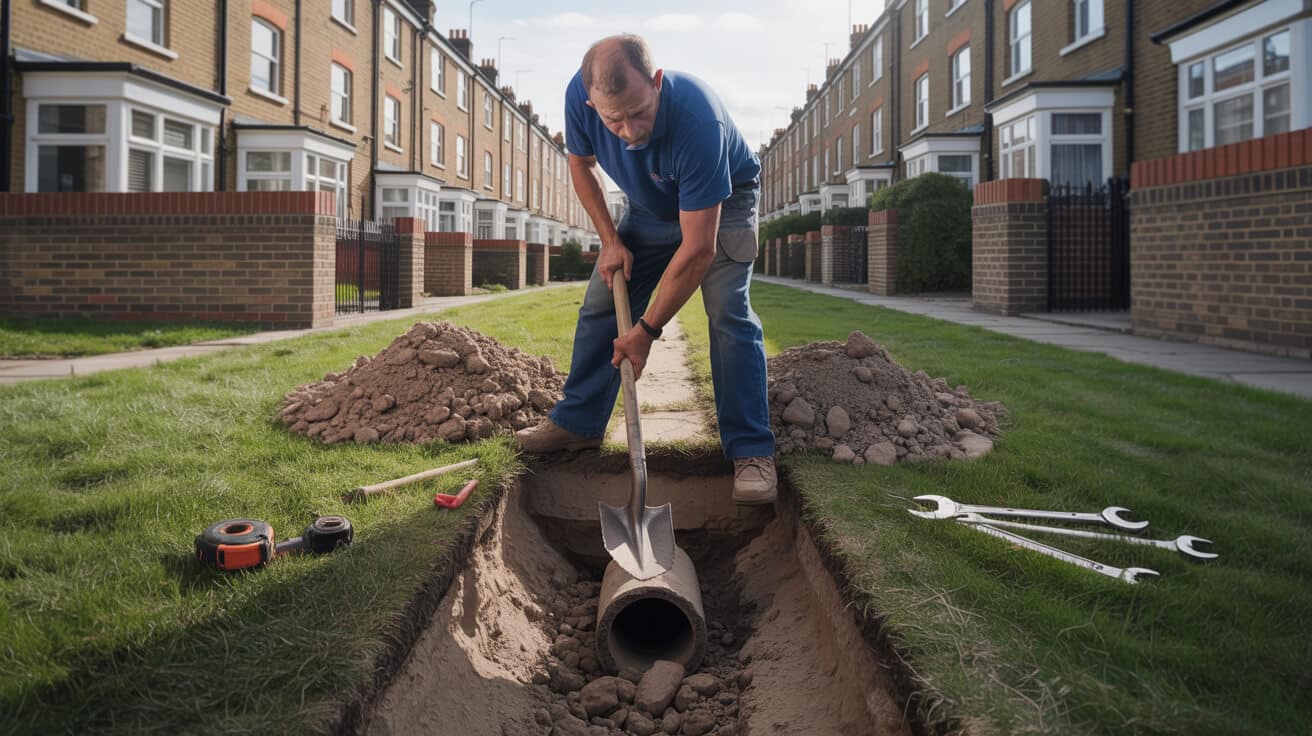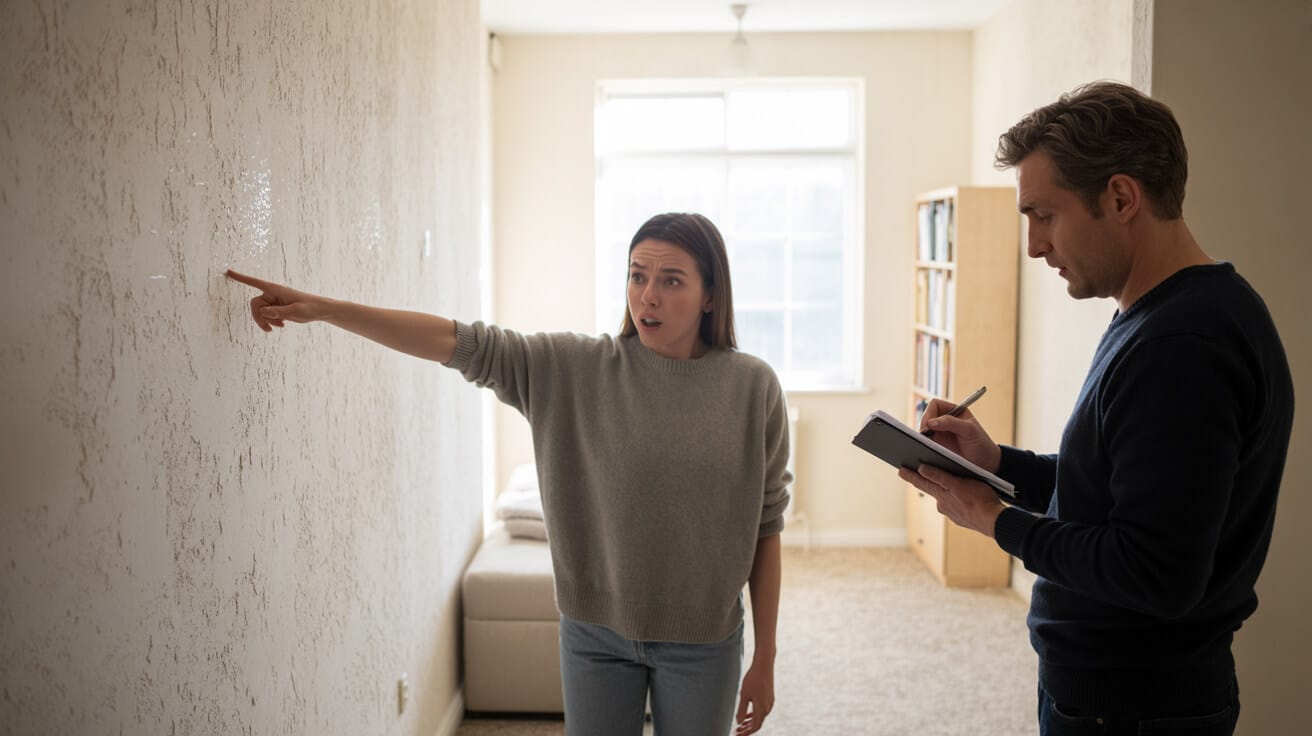 How to Bleed Your Radiators The Right Way
How to Bleed Your Radiators The Right Way
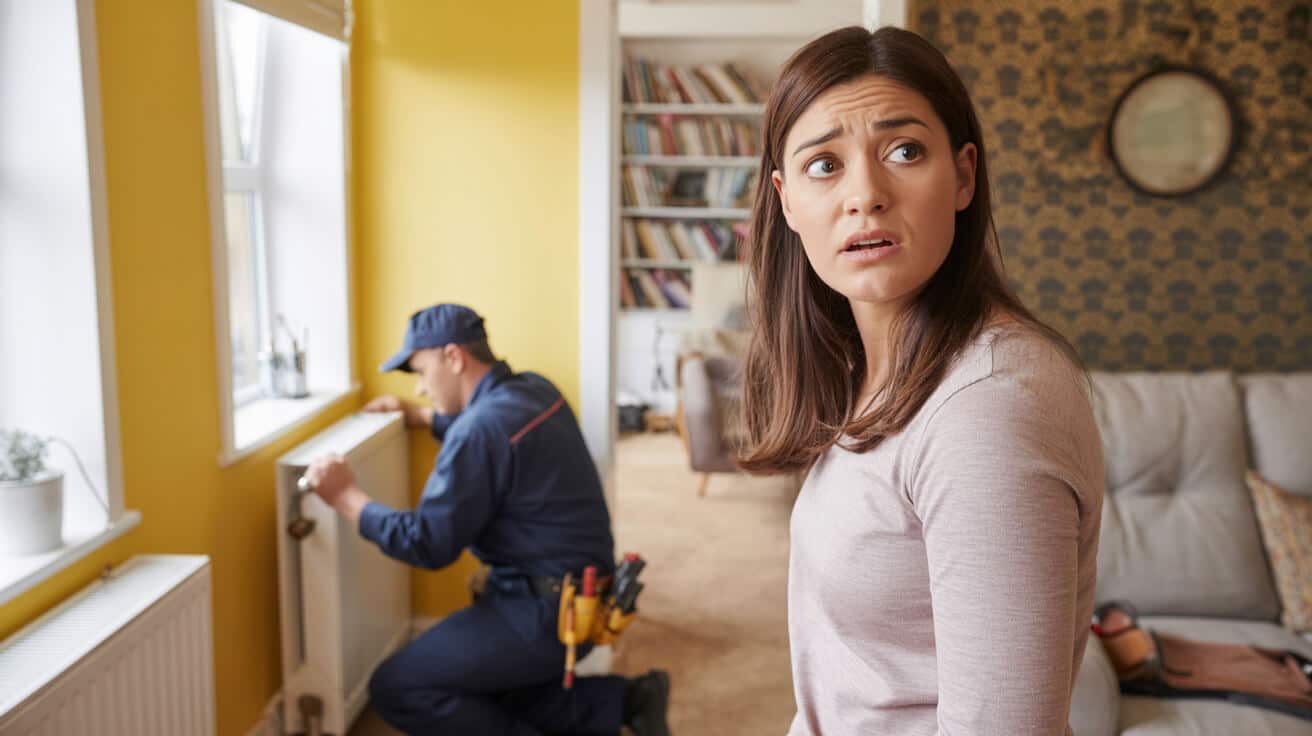
How do you bleed your radiator safely, step by step?
Efficient warmth in your property isn’t luck—it’s the direct result of a proper, safe process for getting rid of trapped air. When radiators are colder upstairs than down, or tenants grumble about slow heat-up times, your system’s been asking for a bleed. Ignored, that little hiss of air comes back as creeping energy bills, pressure drops, and more callouts than you budgeted for. The good news? Anyone—from a first-time buyer to a facilities manager—can take this preventive step with the right method, some basic kit, and a mindset focused on safety.
The luxury of reliable heating is built one practical habit at a time.
Step 1: Preparation—Start Cold
- Turn off your boiler and central heating controls.: Never attempt to bleed a radiator on a hot system. Wait until all radiators are stone cold.
- Identify which radiators need attention.: Drag your hand across the tops—cold spots or gurgling sounds? Add them to the queue.
- Gather your tools: a radiator key (square type for most UK systems), a towel, and a shallow bowl or mug to catch escaping water.
- Access matters: Clear space around valves, especially behind covers or fixed furniture. In large properties, coordinate to avoid overlapping maintenance.
Step 2: Protect Your Space
- Lay down the towel under each radiator valve;: carpet or hardwood needs protecting—don’t wait until you spot drips.
- Position your bowl: directly beneath the bleed valve. Better to over-plan than explain a water mark to a landlord or auditor.
Step 3: Bleed with Care—No Guesswork
- Fit the key on the bleed valve and turn slowly anti-clockwise.: Expect a sharp hiss—that’s air leaving the system.
- Monitor the process closely.: When water trickles (not spits), stop: turn the key clockwise to seal. Never fully unscrew the valve or leave the key in unattended.
- Don’t force a stuck valve.: If it won’t move with light pressure, call a pro—broken valves mean bigger repairs and potential flooding.
Step 4: Restore Pressure and Check
- Check your boiler’s pressure gauge.: If you’ve lost pressure (typically below 1.0 bar), use the filling loop to top up to the zone marked safe—commonly 1.0 to 1.5 bar. Go by the manufacturer instructions.
- Restart the heating system and check for even warmth.: Touch top and bottom—if you still find a cold spot, or the air returns within days, there’s likely a deeper system issue.
Step 5: Sequence for Multi-Storey or Managed Sites
- Bleed radiators starting from the lowest point in the building, working upward.: Air is lighter than water and will migrate to higher points.
- In commercial or centrally-controlled buildings, loop your facilities team in.: Unplanned bleeding can cause system-wide issues; most blocks restrict this to certified engineers.
Pro tip: For flats or shared buildings, document what you’ve done—a photo, a note in the site log, or a simple checklist. This protects you from liability questions and keeps future maintenance consistent.
Get ahead of your asset—bleed now, avoid callouts, and your tenants will never know there was a problem.
Plumbers 4U delivers stepwise, code-aligned service for all client types, using WRAS-approved fittings and full documentation—so you stay compliant and comfortable, no matter your property size.
What are the signs you need to bleed a radiator—and what happens if you don’t?

Most heating headaches don’t start in the boiler—they creep in as trapped air, hiding in plain sight. It’s the gurgling you ignore, the tepid radiators in that back bedroom, or that tenant who reports “room never fully warms, even with the heating blasting.” These are your early warnings that the system is holding air, not water, and you’re paying the price.
Every day you put off bleeding radiators is a day wasted in higher bills and colder rooms.
The Usual Suspects: Spotting Air in Your System
- Radiator cold at the top, warm at the bottom: The classic—the hottest water can’t get past the air pocket.
- Gurgling, hissing, or “sloshing” sounds: Not ambience, but air jostling for space in your pipes.
- Slow-to-heat rooms: Even after an hour’s running time, radiators lag.
- Visible boiler pressure drops: On a pressurised system? The air pocket’s displacing water, and your gauge tells you trouble’s coming.
- Rooms that never quite heat evenly: The air’s breaking up water flow. In commercial spaces, whole zones can go off balance.
These symptoms ring true whether you’re in a single-family home, a block of managed flats, or an office with tenants phoning about “patchy warmth”.
The Penalty for Inaction
- Bigger energy bills: A poorly bled system can use up to 15% more energy *(Energy Saving Trust, 2023)*.
- Early pump and boiler burnout: When air displaces water, your kit strains—so expect breakdowns and shortened warranty coverage.
- Leaks and water damage: An ill-tightened bleed valve can leave you with wet floors and repair bills.
- Regulation risk: Rental and public buildings need safe, warm environments—fail here, and complaints or fines pile up.
- Tenancy blowback: Nothing erodes trust faster than complaints about heating in midwinter.
Letting the problem drift costs more than the hassle of bleeding today. Plumbers 4U can add digital checklists or routine inspections for EICR, CP12, or site compliance—the difference between a smooth winter and a maintenance backlog.
What should you do if your radiator stays cold after bleeding?
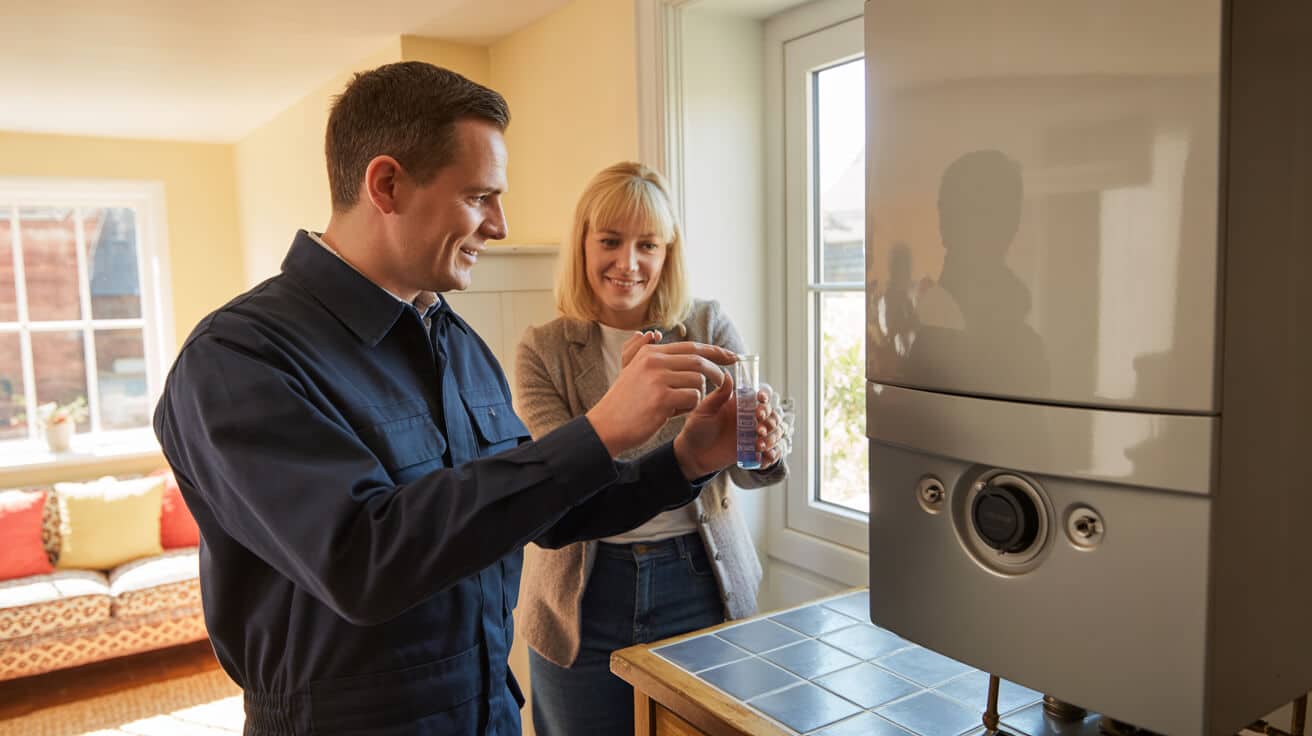
Sometimes you do everything by the book—bleed, top up, restart—yet that radiator refuses to heat. This is when you move from quick fixes to smart diagnostics. Rushing or guessing here can turn a small snag into a big, expensive job.
Persistence in the wrong fix costs more than pausing to diagnose.
What’s Going Wrong? Checklist for Persistent Cold
- Valves set wrong or jammed: Check both the thermostatic (TRV) and lockshield ends—they should open readily. Years of hard water or grime can gum them up.
- Heavy internal sludge: Rust and scale, especially in older or steel-heavy systems, block flow and keep water from moving.
- Imbalance from poor set-up: One radiator hogs all the flow; the rest lag.
- Hidden airlocks elsewhere: Especially likely in multi-level or recently extended buildings.
- First signs of a deeper fault: A dying pump or controller can rob multiple radiators of heat.
Next Steps: Stepwise Action Plan
- Test all valves for movement,: gently but firmly—if one feels stiff, don’t force it. Flag at once for further attention.
- Feel the inlet and outlet pipes: If both stay cool or only tepid, it’s a flow problem, not trapped air.
- Check system pressure and timer settings: Low pressure or a confused programmer can spoil heating for a whole wing.
- Try rebalance: Adjust nearby radiators’ lockshields to see if flow improves (log every change for your own records).
- When in doubt, bring in a pro: Recurring air after bleeding, stuck valves, or cold spots across more than one radiator are all signs to call Plumbers 4U—for expert thermal imaging, sludge flushes, full system audits, and compliant record-keeping.
Persistent heating faults that resist DIY attention don’t self-heal—leave them to a qualified, WRAS-approved engineer.
Owners, agents, and property managers who escalate fast get definitive resolutions, save time, and build a reputation for care with tenants or regulatory inspectors.
Do you need any special tools to bleed your radiators, or can you do it yourself?

The safe, effective bleeding of most home or office radiators is designed to be possible with what you’d find in any supermarket or trade counter. No need to call in heavy artillery—just a clear process, well-selected equipment, and common sense.
The Essential Kit
- Radiator bleed key: UK’s most common is a square key, but some designs require a flat-blade screwdriver or a unique tool (check before starting).
- Towel and small bowl: For minimising spills and keeping flooring pristine.
- Protective gloves: Optional but wise in tenanted units or for repetitive work. Avoids nicks from rough castings.
- System map or awareness: A grasp of which radiators are on which loops, where the main shut-off and filling loop are, and whether the boiler is gravity-fed or sealed.
When You’re Safe to Proceed
- Standard homes: If everything moves, nothing’s corroded or damaged, and you have building access, you’re clear to go.
- Landlords/agents: Verify whether your contract or lease restricts maintenance access. Commercial and multi-unit buildings often have policies forbidding direct work—get sign-off from facilities or use your regular contractor for asset protection.
- Stuck bleed valves: If a valve is seized, leaking, or rounded-off, don’t force it. Extraction and replacement is a job for an engineer; a forced break can mean water everywhere—and sometimes tenant relocation.
You don’t need a van load of tools—just the right key and humility to stop if something doesn’t feel right.
With Plumbers 4U, you get more than bleeding—you get fast training for your staff (ideal for letting agents or caretakers), compliance documentation if required, and a direct line for emergencies when simple isn’t enough.
Why does air collect in radiators—and how can you reduce it happening again?
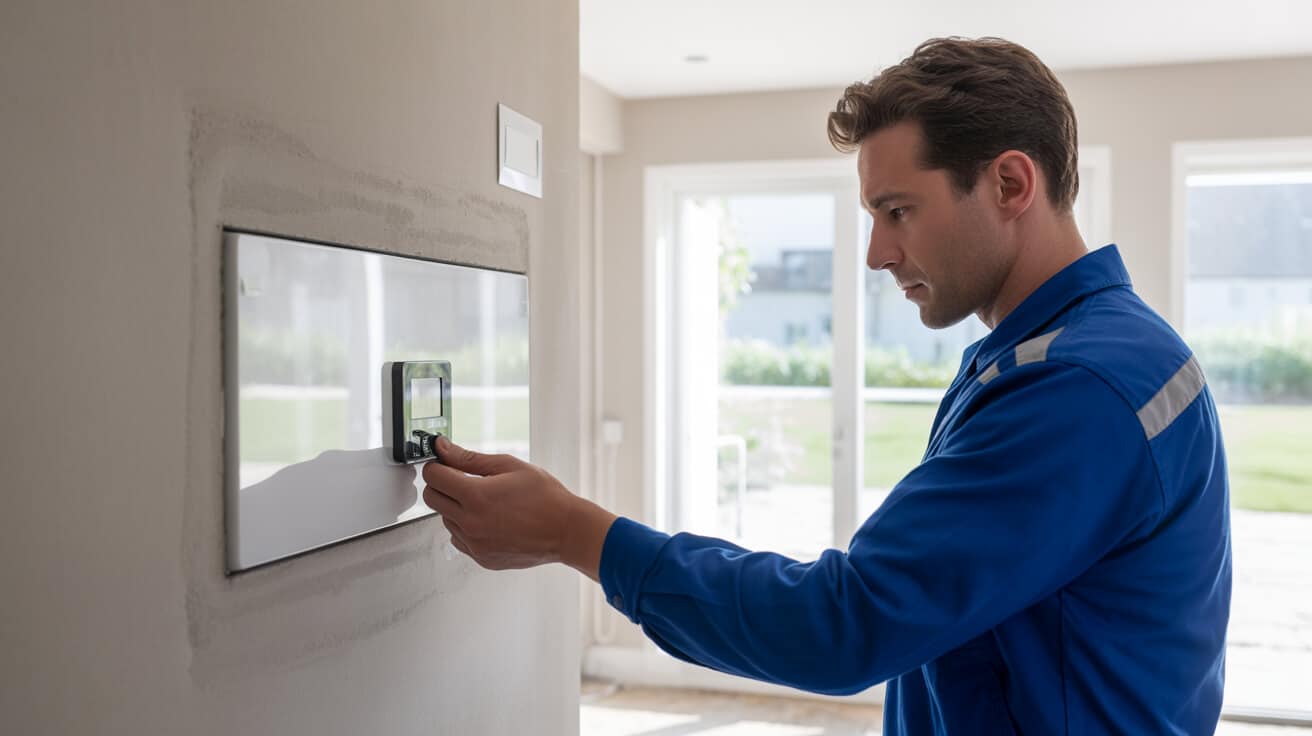
Anyone managing assets for more than a season will notice a pattern: air always finds its way back in unless you solve the cause, not just the symptom. Cutting the cycle means thinking system-wide—where leaks can sneak in, where top-ups are too frequent, where chemistry invites trouble.
If you keep bleeding the same radiator every month, you’re not maintaining—you’re masking an overlooked fault.
Why Air Returns: The Real List
- Tiny leaks at joints or fittings: Pressure drops in a sealed system let air trickle in as water cools.
- Routine topping-up: Every time you add water, you add some dissolved air.
- Corrosion byproducts: When steel meets oxygen, gas forms—no way around it besides chemical inhibitors.
- Temperature swings: Massive changes between operational and off schedules open vacuum gaps, inviting air into the system.
- Idle branch runs: Little-used radiators or sections away from the regular flow can become air traps.
Winning Moves to Block Future Air Buildup
- Pressure-test the system after any unexplained water drop,: especially after a cold spell or heavy use.
- Upgrade to automatic air vents: in hard-to-reach spots—ideal for schools, high blocks, and commercial instals.
- Add or maintain corrosion inhibitor: at every service (document this for warranty and insurance).
- Flush and rebalance every few years,: not just when there’s a problem.
- If you’re topping up more than twice per year,: call for leak tracing; the system isn’t “settling,” it’s calling for help.
Plumbers 4U services go beyond reaction—they protect from silent faults building up beneath your staff’s or tenants’ attention. Scheduled plans, compliance walkthroughs, and digital asset logs keep air issues from becoming the norm.
Are there risks or mistakes to avoid when bleeding radiators?

The simplicity of the job doesn’t eliminate the real risks involved. From scalds to flooding, ignored best practices—or panicked improvisation—lead to rapid trouble. A disciplined, by-the-checklist method is your insurance.
The Mistake List
- Bleeding hot radiators: The pressure’s higher, and water is boiling-hot—one slip means burns.
- Over-turning the valve: Even one extra twist can unscrew the whole valve, dumping litres of water and redecorating the room.
- Improvising your tools: A pair of pliers or a screwdriver can chew up a soft brass bleed point. Always use a dedicated radiator key.
- Skipping the pressure reset on sealed systems: Dropping below 1 bar risks a winter heating shutdown; overfilling can pop safety valves.
- Isolating a single radiator only: Air drifts—treat all radiators in a circuit for true system health.
- Wrong-sequence bleeding: Always work from the bottom floor up—don’t let rising bubbles stay in the attic.
- Repeated air reappearance: If air’s back in days, you may have corrosion, a major leak, or a failing component.
The only shortcut in heating is the one toward your next service call.
Plumbers 4U brings thoroughness to every job—covering more than bleeding, checking expansion vessel pressure, visually sweeping for pipe leaks, and flagging compliance: meaning fewer emergency calls and a stronger asset reputation.
How can regular radiator maintenance reduce heating and energy bills?
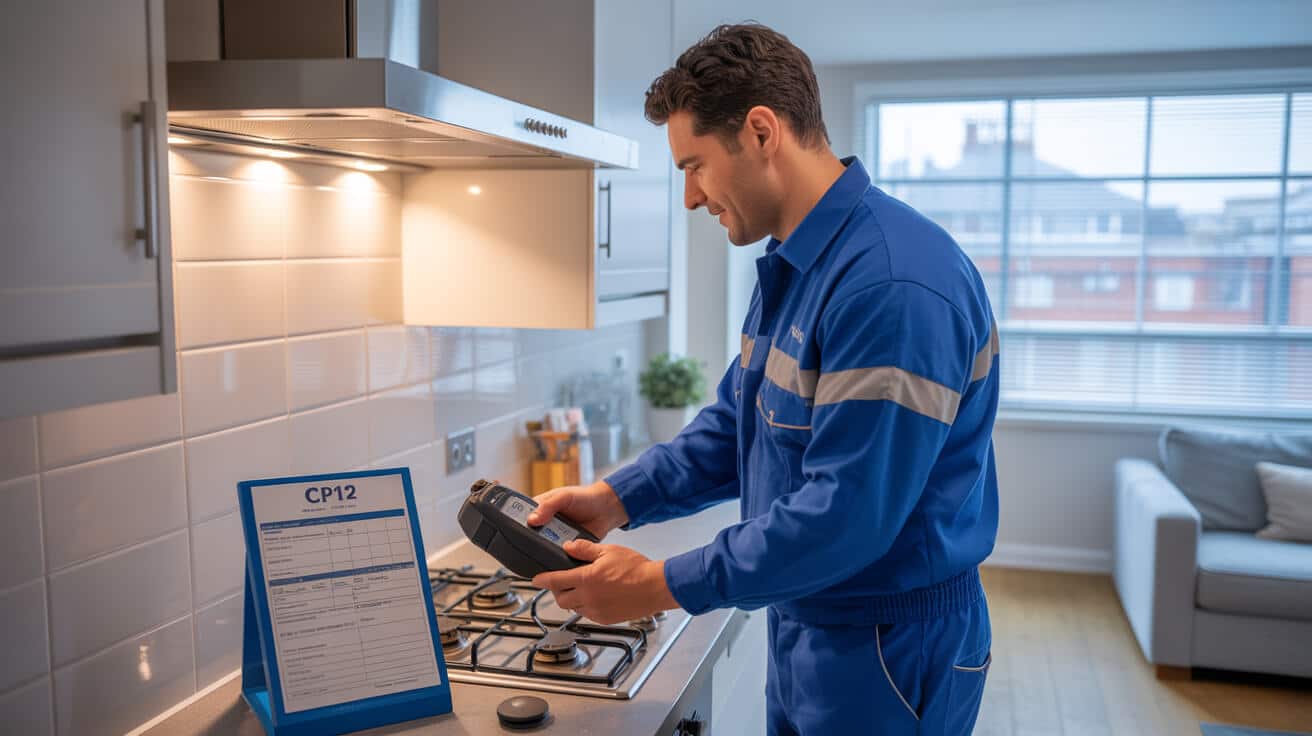
Most owners and operators think of the annual service as a checkbox moment—but in reality, a cycle of scheduled bleeding, testing, flushing, and balancing pays off in hard currency and property perception. It’s about consistency, not just compliance, if you want your building to run warm, quiet, and with happy occupants.
Preventive maintenance is your bargaining chip; use it or pay its absence tenfold later.
Quantifiable Benefits
- Lower energy spend: A well-maintained system uses up to 15% less energy *(Energy Saving Trust, 2023)*.
- Higher EPC and compliance scores: Regular logs build value, not just for auditors, but for future buyers or tenants.
- Prolonged asset life: Pumps, pipes, and radiators last years longer without air, grime, or scale.
- Zero hassle reputation: Professional records—digital job sheets, before/after photos—make insurance, legal, or regulatory conversations end faster.
- Noise-free running: Fewer airlocks, less gurgling and hammer, making life (and tenancies) calmer.
The Smart Manager’s Routine
- Schedule a full bleed before your main heating season.:
- Assign a responsible staffer or caretaker to check radiator valves,: looking for early corrosion or leaks every quarter.
- File every maintenance or repair in your digital logbook—: you’ll thank yourself at audit time.
- Book a qualified pro every 3–5 years: for full flush and balance—a small cost, big return.
- Consider smart stat and vent upgrades: for larger, multi-use sites—they pay themselves back in one or two winters.
Plumbers 4U helps property managers, landlords, and public sector bodies build a bulletproof maintenance routine—one that stays a step ahead of troubles and keeps properties out of circulations of “last-minute” callouts.
What is the role of a professional engineer if bleeding doesn’t solve the issue?
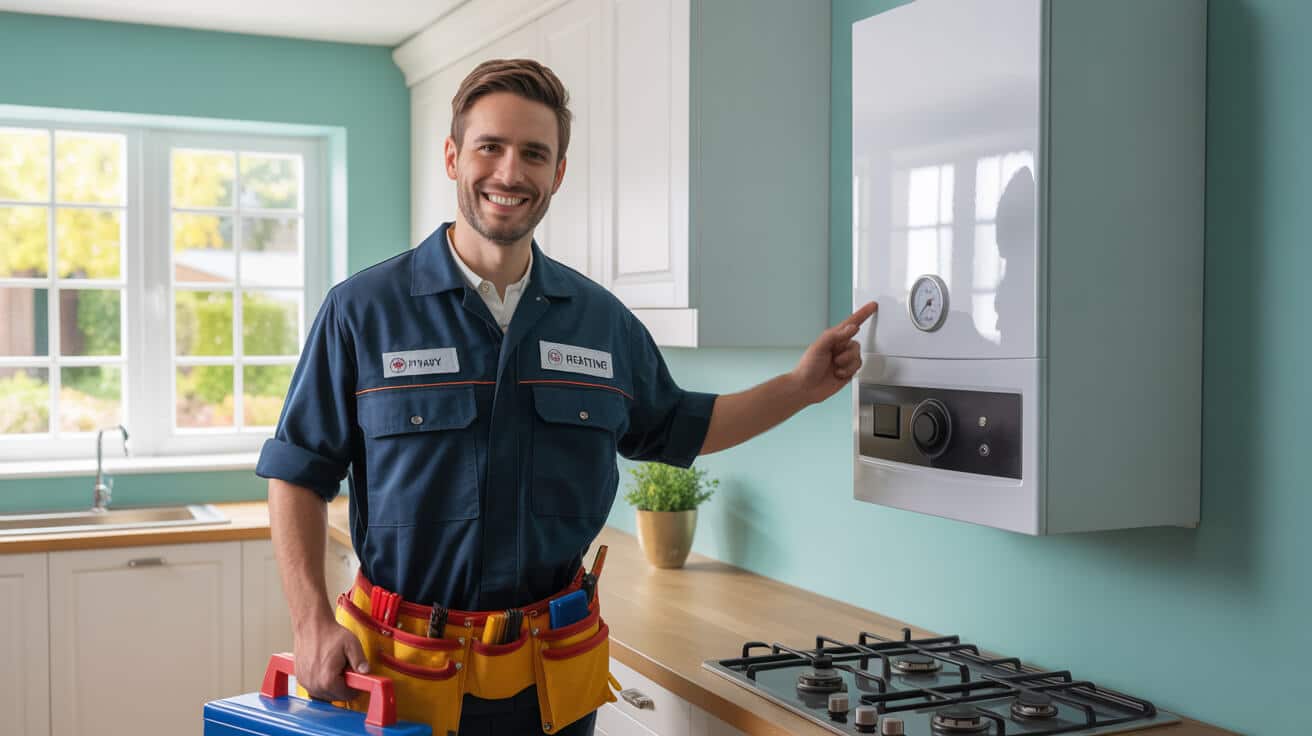
Sometimes, the plan doesn’t work, and that’s when you need to swap the radiator key for a call to a G3, GasSafe, or WaterSafe certified engineer. Their value isn’t just in turning wrenches but in spotting what the eye misses—and documenting every step for audits, claims, and peace of mind.
The engineer is never just fixing the heating—they’re protecting your name and your asset.
Professional Interventions: What to Expect
- Precision diagnostic tools: Thermal imaging, acoustic leak detection, wireless system monitors, and chemical water analysis.
- Certified component swaps: Boilers, unvented cylinders, major valves, or any system with a compliance tag must be handled by someone registered, or you risk insurance nullification.
- Complex problem solving: Multi-zone heating logic, smart system troubleshooting, or resolving problems in large communal blocks.
- Regulation and paperwork handled: All work logged to WRAS, G3, GasSafe, and landlord/EPC compliance levels—saving you from legal exposure.
- Maintenance audits and legacy checks: Comprehensive site surveys, water quality logs, and recommendations for system upgrades.
With Plumbers 4U, you don’t just get a toolbox—you get a strategic partner for property health, compliance, and seamless experience for every stakeholder, from residents to regulators to asset managers.
Contact Plumbers 4U Today
Delaying a bleed—or underestimating the value of routine heating care—costs more than comfort. It undermines asset value, compliance, and your own peace of mind. Whether you’re on your first house, managing a tenant portfolio, or overseeing municipal properties, the move is clear: act proactively, and set a standard others will want to follow.
The property owner who solves problems before the cold snap earns trust—and better tenancies—for years.
Plumbers 4U brings certified, WRAS- and G3-trained professionals, upfront pricing, and ironclad documentation. Homeowners get reliable heat with no drama. Landlords build bulletproof compliance. Letting and managing agents erase complaints before they surface. Commercial property and local authority managers keep sites audit-ready, comfortable, and future-proof—no stress, no up-sell, just competence delivered.
When you want warmth and compliance, not worries, make the call to Plumbers 4U.
Frequently Asked Questions
What subtle factors cause radiator bleeding jobs to take an unexpected turn?
Bleeding a radiator isn’t always as simple as loosening a valve and letting the air escape—unexpected factors often derail what should be a “five-minute fix.” Systems built in different eras, ill-matched pressure balances, and ageing components can all lead to stubborn cold spots, leaks, or system-wide pressure losses when a job is rushed or performed on autopilot. Shared heating loops and modern sealed circuits multiply the risks: if one valve sticks or a bleed point shears off, an innocent maintenance task can drain more than just a single radiator—and leave multiple flats, tenants, or an entire block shivering come evening.
Which overlooked mistakes have the biggest consequences?
- Skipping the pressure check: Failing to validate the system’s baseline before bleeding can trigger a boiler shutdown, leave upper floors cold, or introduce a fault others will inherit.
- Ignoring valve age or stiffness: Bleed screws that haven’t been moved in years can snap or refuse to reseal—a hidden leak that’s easy to miss, but expensive to correct.
- Bleeding without rebalancing: Simply releasing air in one part of an unbalanced system creates pressure differences that fade warmth room-by-room.
- Treating all radiators as equal: Older installations, twin-entry setups, or commercial plant loops need specific bleed protocols or the “fix” may silently introduce a new risk elsewhere.
A radiator key in the wrong hands can turn a routine check into a domino effect, chilling more than just one room.
Plumbers 4U approaches every job with a system lens—validating pressure, inspecting valve state, logging before and after readings, and confirming that no zones are left out of sync. For managers and private owners alike, this means fewer callbacks, less mystery, and heating you can trust right through a British cold snap.
How can you avoid repeat embarrassment and extra cost?
- Don’t rely solely on tradition—verify every parameter before bleeding.
- In multi-unit or managed properties, require an engineer’s audit log for each intervention.
- Opt for WRAS-approved parts and photo-documented work—insurers and managing agents value transparent, verifiable fixes.
Whether you’re tired of futile DIY solutions or chasing repeat cold spots, consider switching to a professional assessment—and future-proof your heating for the whole season.
Why does persistent radiator “air” point to deeper system weaknesses?
If you’re reaching for the radiator key every month, or your system pressure needs topping up more than twice a year, your home or building is waving a red flag. Constant airlocks and gurgling are almost never just “one of those things”—they signal underlying leaks, expansion vessel fatigue, or even chemical corrosion within the pipework and rads. As minor as these may appear at first, neglect leads directly to higher bills, accelerating breakdowns, and, in busy managed properties, unwelcome downtime or regulatory headaches.
How do chronic air problems reveal their root cause?
- Unseen pinhole leaks: Silent seepage lets new air infiltrate, especially on old joins hidden beneath floors or behind cavity walls.
- Sludge and internal rust: As steel and iron pipes corrode, they spawn gas that feeds bubbling and cold spots. Just bleeding isn’t a cure—it’s a symptom mask.
- Compromised expansion vessel: When the vessel’s internal diaphragm gives way, the system absorbs more oxygen, making airlocks a recurring nightmare.
- Improper refill routines: Frequent manual top-ups dump extra oxygen into the circuit, setting up months of future problems.
Every click, buzz, or glug after a bleed is your pipework begging for a bigger-picture solution.
A full diagnostic from Plumbers 4U doesn’t just fix a radiator—it traces cause to source, logs each finding for insurers or block managers, and, where needed, prescribes treatments from corrosion flushes to vessel replacement or smart vent upgrades.
What’s the playbook for escaping the repeat-bleed trap?
- Book a system-wide leak and pressure test—not just a single rad check.
- Invest in inhibitor dosing or corrosion treatments where water runs cloudy or rads show brown streaks.
- In commercial assets or blocks, demand reporting that distinguishes between isolated air issues and structural faults.
- Consider upgrading to automatic air vents in “problem” rooms or high points.
By shifting your focus from the symptom (air) to the system, you’ll transition from firefighting to genuine asset stewardship.
What legal and compliance pitfalls catch out property owners and agents before they even lift a bleed key?
Bleeding radiators in a home is routine, but in a flat, rental, or commercial building, one misjudged bleed can void insurance, trigger disputes, or even breach safety laws. Modern lease contracts, block management rules, and insurer clauses often set clear boundaries on who may touch any part of a heating system—especially in HMOs, shared schemes, or premises housing children or vulnerable tenants. Failing to heed these isn’t just a technical misstep. It exposes owners and agents to avoidable fines or—worst case—personal liability for any injury, damage, or downtime.
When does a simple bleed become a legal issue?
- Rented or managed property: Most landlord policies require any intervention (beyond basic venting) to be logged and certified by an engineer, not a resident or handyman.
- Vulnerable occupancy or health settings: WRAS, G3, and safeguarding legislation mean even routine radiator care can require sign-off, especially in care homes, schools, or medical sites.
- Blocks and multi-unit buildings: Leaseholder packs and block contracts often ban any “DIY” work on a communal system, stating explicitly that only nominated agents can intervene.
A single unauthorised adjuster risks the heat, cover, and compliance status for more than their own flat.
With Plumbers 4U, every fix is registered, documented, and photo-tracked, providing bulletproof proof-of-service for management packs, tenant queries, or audit trails—a real cost and liability shield.
Is there any safe margin for DIY before calling in the pros?
- Obtain explicit written consent if you’re not the legal owner or system operator.
- Meticulously record every action, air release, and pressure change.
- Know that liability for knock-on faults (like a whole block going cold) will often fall to whoever last intervened—regardless of intent.
For most modern owners and managers, system comfort isn’t worth risking contractual compliance or a run-in with insurers.
How can smart upgrades make radiator bleeding (and headaches) a thing of the past?
New technology means periodic radiator checks are being replaced with “fit and forget” solutions that keep systems perfectly balanced for years. Smart vents, inhibitor monitoring, and digital pressure controllers now allow even sprawling or elderly systems to auto-compensate for both new air and seasonal temperature swings. For asset managers, this means less staffing needed for routine tasks and fewer distractions from “can you bleed mine?” calls as colder months hit.
Which upgrades provide the most freedom from annual or emergency bleeding?
- Automatic air vents: These purge trapped gas continuously, removing the need for regular manual intervention.
- Smart monitoring: Pressure, temperature, and occupancy sensors feed live data to apps, alerting you early to patterns or issues without guesswork.
- Modern corrosion inhibitors and dosing pods: These prolong system life and slash the main cause of air by keeping water chemistry in peak condition.
- Digital balancing tools: Precision balancing with remote sensors maintains every circuit, preventing the emergence of “cold branches” after upgrades or repairs.
With the right upgrades, your radiators just work—heat is as reliable as the sunrise.
Plumbers 4U’s team can assess your setup for upgrade-readiness, recommend pre-certified parts, and handle the switchover with zero downtime—even for multi-unit or sensitive facilities.
Who benefits most from these innovations?
- Multi-floor or open-plan homes with legacy heating runs.
- Older buildings where chasing leaks or balancing is a perennial job.
- Commercial landlords seeking audit trails and continuous improvement for EPC or insurance review.
- Any owner hoping never to explain a cold room complaint again.
A single upgrade removes years of routine and soothes nerves for owners and tenants alike.
How does caring for your radiators boost EPC scores and increase your property’s value?
Routine care of the heating system, including professional bleeding and system balancing, has a direct impact on energy efficiency, EPC ranking, and property appeal. Silent, well-running heating reassures surveyors, points to hidden investment in asset upkeep, and, in crowded markets, can tilt rental or sales negotiations in your favour. In contrast, neglected systems tell a storey of risk, looming costs, and “crisis-mode maintenance”—and that can cut your asset value down before an offer is ever made.
What evidence convinces auditors, buyers, and insurers?
- Rapid heat-up, silent operation: These trigger key points in EPC checklists and prove ongoing care when surveyors visit.
- Compliance logs and certificates: Well-maintained paperwork from professionals is proof-of-service in negotiation or annual review.
- Lower maintenance and repair bills: Consistent bleeding and balancing prevents the big-ticket surprises everyone dreads.
- Traceable upgrades: Showing a chain from manual to smart self-management tech impresses stakeholders and differentiates your property.
When you can prove you care before anyone even walks in, trust—and value—rise together.
Plumbers 4U embed every maintenance or repair in a documentation trail simple enough for agents, lenders, or insurers to follow—transforming “just a fix” into a competitive edge.
Where does the ROI show up fastest?
- During letting or sale, as EPC rating passes, reduce last-minute costs, and negotiated premiums.
- Lower annual energy costs for owner-occupiers or tenants.
- Stronger negotiating position—buyers and tenants prefer a property with less risk or “baggage.”
Routine care becomes an asset signal, changing how your property is seen and how much value it commands.
Which forward-thinking routines help property managers and asset owners prevent heating emergencies entirely?
Modern facilities and O&M workflows have moved beyond “wait for drama”—today’s best operators combine scheduled audits, digital compliance logs, and upskilled in-house observation so issues are spotted and solved before tenants, owners, or board members ever learn a problem exists. Embracing a blend of software and strategic check-ups ensures comfort through the coldest months—without last-minute dashes for spares or panicked after-hours callouts.
What does a gold-standard maintenance routine involve?
- Digitised service logs and reminders: Cloud-synced to unite record-keeping, engineer notes, and compliance data in one place.
- Timed professional audits: Set up at summer’s end and midway through winter, catching lagging radiators, silent failures, or unseen pressure losses.
- Targeted upskilling: Training select team members to spot developing issues, but requiring all high-risk tasks be referred to Plumbers 4U’s certified staff for intervention.
- Root-cause data tracking: Move beyond patch-up—track why and where issues emerge to guide upgrades and schedule efficient repairs.
Great property managers aren’t just ‘fixing heat’—they’re running invisible systems that make winters feel easy.
Plumbers 4U crafts O&M plans tailored to your asset and compliance targets, providing roadmaps for audit, upgrade, and fault-prevention—so heating is never a crisis again.
How does this translate to tenant and owner satisfaction?
- Fewer callouts, less downtime, and a reputation for comfort
- Simplified reporting for agents, block managers, or regulators
- Documented resilience—properties seen as reliable, cared-for, and valuable
- Enhanced compliance for grant applications, insurance renewals, or ratings reviews
You don’t just want “no complaints”—you want to lead the field. Prepare your next heating season with a proactive plan and remove risk before it even starts.
With every logged visit, certified upgrade, and professional assessment, you build a property reputation that outperforms your peers. Book a maintenance consultation or upgrade with Plumbers 4U now—because reliable warmth shouldn’t be a gamble, it should be your signature.

